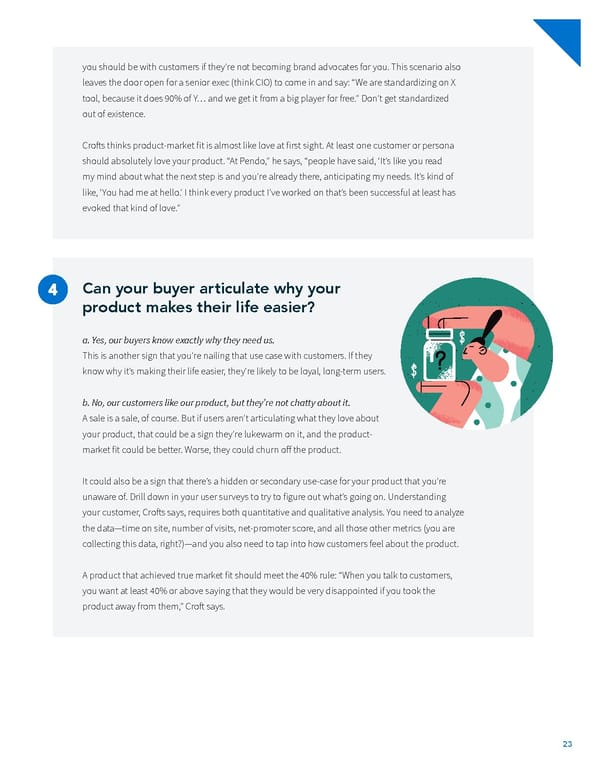you should be with customers if they’re not becoming brand advocates for you. This scenario also leaves the door open for a senior exec (think CIO) to come in and say: “We are standardizing on X tool, because it does 90% of Y… and we get it from a big player for free.” Don’t get standardized out of existence. Crotfs thinks product-market ift is almost like love at ifrst sight. At least one customer or persona should absolutely love your product. “At Pendo,” he says, “people have said, ‘It’s like you read my mind about what the next step is and you’re already there, anticipating my needs. It’s kind of like, ‘You had me at hello.’ I think every product I’ve worked on that’s been successful at least has evoked that kind of love.” Can your buyer articulate why your product makes their life easier? a. Yes, our buyers know exactly why they need us. This is another sign that you’re nailing that use case with customers. If they know why it’s making their life easier, they’re likely to be loyal, long-term users. b. No, our customers like our product, but they’re not chatty about it. A sale is a sale, of course. But if users aren’t articulating what they love about your product, that could be a sign they’re lukewarm on it, and the product- market ift could be better. Worse, they could churn off the product. It could also be a sign that there’s a hidden or secondary use-case for your product that you’re unaware of. Drill down in your user surveys to try to ifgure out what’s going on. Understanding your customer, Crotfs says, requires both quantitative and qualitative analysis. You need to analyze the data—time on site, number of visits, net-promoter score, and all those other metrics (you are collecting this data, right?)—and you also need to tap into how customers feel about the product. A product that achieved true market ift should meet the 40% rule: “When you talk to customers, you want at least 40% or above saying that they would be very disappointed if you took the product away from them,” Crotf says. 23
 Guide to Breaking into the Enterprise Market Page 22 Page 24
Guide to Breaking into the Enterprise Market Page 22 Page 24